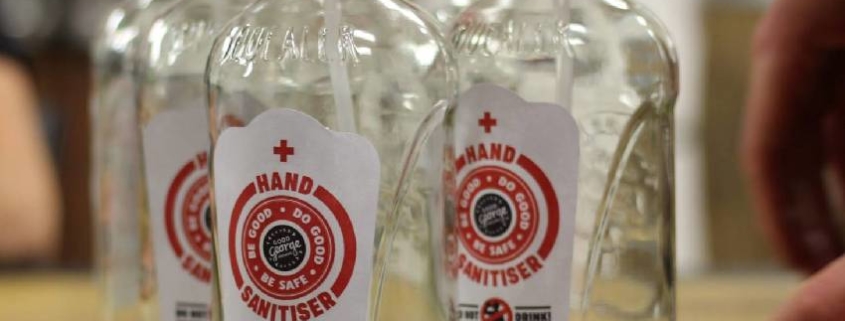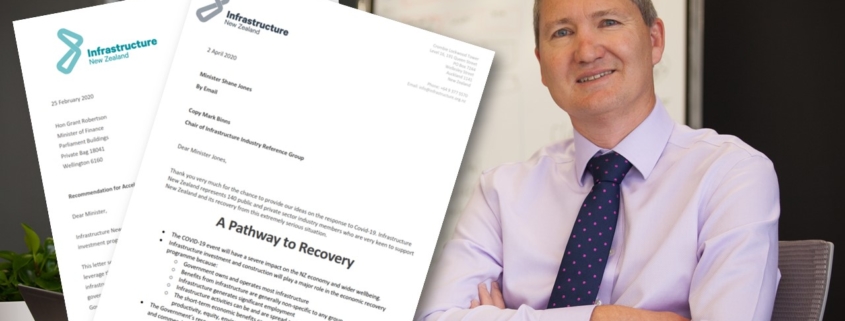Pandemic pivots: The best of NZ business showing resilience in the face of adversity (The Spinoff)
Non-essential business has taken a hit over the past month, but innovative New Zealand companies are finding the silver lining.
Restrictions imposed by the Covid-19 lockdown have caused some businesses to consider closing up shop for good. While some have taken this route, others have used the restrictions forced upon them to pivot into areas they hadn’t before – either because they had never needed to, or they had never considered it.
One of the best examples of this is Nanogirl Labs, run by one of New Zealand’s best-known science communicators, Dr Michelle Dickinson. It was quickly apparent to Nanogirl Labs that its “old” business – live stage shows and performances at schools around New Zealand – was not viable in the near future.
“I looked at our staff, I looked at my husband and business co-founder and we knew there was a big decision to be made: accept defeat and wind the business up, or fight for something we believed in,” said Dickinson.
Within three days her team developed an online learning platform for those same kids they would normally reach through their shows who now needed to stay home. Each weekday, a “science adventure” is delivered to teach STEM (science, technology, engineering and mathematics) to New Zealand’s next generation using common household items. On top of that, Nanogirl Labs maintained its “buy one give one” model – meaning those who wouldn’t have been able to afford to take part can.
Waikato brewery Good George moved early to produce 1,000 litres of hand sanitiser from a distillery it had been using to make spirits. Co-founder Brian Watson says they had the idea after having trouble sourcing the liquid gold for its own staff: “We had our whisky and gin programme going for a while and we thought: the world needs hand sanitiser more than it needs gin and whisky right at the moment,” he said.
Similarly, dairy giant Fonterra made 250,000 litres of ethanol available to companies making hand sanitiser and has also increased the production of ethanol at one of its plants. Chief executive Miles Hurrell said in a webinar this week that this came at “a significant cost to our business, but we knew it was the right thing to do”.
Steve Nathan, chief executive of timesheet company TimeHub, says he was inspired by British technology company Dyson, which repurposed some of its production from vacuum cleaners to ventilators. He said it made him wonder, “How can we not pivot, but rather repurpose what we have for our new normal?”
His team created MyVisitorLog, an online service that allows customers to use their own device to record when they visit a business. This will be a long-term requirement for contact-tracing purposes – particularly for restaurants, cafes and bars – and this tech will allow it to happen contactlessly.
Responsive retailing
Supermarkets were among only a handful of retail outlets allowed to open during the alert level four restrictions and as such have been innovating since the beginning of the lockdown.
Foodstuffs has been trialling a virtual check-in for customers, where shoppers text the supermarket to be put into a queue and are sent a reply when it’s their turn to shop. This has made social distancing easier – customers can queue in their car – but has also meant that shoppers like me who live close to one of the supermarkets participating in the trial can queue virtually from home (and then get to the supermarket at pace to meet the 10-minute allowance!).
Clickandcollect, set up by George Czabania, automatically collates click-and-collect slots for all supermarkets across New Zealand, allowing customers to more easily hunt out available times (which have been incredibly scarce during lockdown).
Another website, How Long is the Line, built by developer Gareth Hayes, crowdsources queue times at supermarkets, helping customers avoid an unnecessary two-hour wait in their attempt to locate flour (often unsuccessfully). Customers feed data into the site to approximate the number of people waiting in the queue – the more people who update the site, the more accurate it is.

Countdown opened New Zealand’s first dedicated online store in Auckland to respond to the massive 300% surge in online shopping demand. The 8,800-square-metre store is located in Penrose, and is operating 24 hours a day, seven days a week to fulfil more than 7,500 orders per week.
The shift to alert level three has spurred on further innovation in retail, as brick-and-mortar stores look for ways to adapt that will allow them to continue to trade when restrictions won’t allow foot traffic.
New Zealand Made launched a custom website to help New Zealand retailers that have inventory ready but haven’t been able to open to take orders until now. These retailers were ready and waiting to send orders out at 11.59pm on April 27, as soon as the level four restrictions end. #ShopKiwi, New Zealand.
The Warehouse Group recently announced it is allowing contactless click-and-collect from The Warehouse, Warehouse Stationery, Noel Leeming and Torpedo7 outlets from this week.
“We wanted to offer Kiwis another way to shop safely as we transition into alert level three,” says The Warehouse Group chief executive Pejman Okhovat.
“While we can’t open our stores during this time, we can offer another safe and secure way for Kiwis to shop our complete online range that’s free, except for oversize items, and easy to use.”
It’s also trialling drive-through shopping at four of its Auckland outlets, which will also allow access to orders made through online retailer TheMarket. Bolstering its online offering, TheMarket has partnered with grocery and ready-made meal businesses Foodbox, HyperMeat and Jess’s Underground Kitchen for this initiative.
Meals on wheels
New Zealand’s largest online restaurant table booking website, Restaurant Hub, has launched a new service to enable customers to order click-and-collect meals from restaurants. The service has had a huge amount of interest, with 140 restaurants and cafes opting in over the first weekend.
Uber Eats’ refusal to reduce its standard commission charge of 30-35% has caused public outrage. Responding to this, prime minister Jacinda Ardern encouraged New Zealanders “who may be looking forward next week to accessing takeaway food to look at your favourite local eatery – and I do encourage you to support local businesses – and just look at whether or not they offer delivery directly themselves”.
Tim McLeod says the desire to help his favourite cafes and restaurants caused him to “pivot away from my day job” as a digital tech consultant and create Eat Local NZ as an Uber Eats alternative. He says the platform will charge restaurants just 5% commission and will pay drivers more than Uber Eats.
Car rental business Snap Rentals pivoted by bringing its usual services to a complete standstill. It launched an app that pairs its rental cars with its staff to perform personal grocery shopping services for customers. Chief executive Jamie Bennett says the delivery service has been so popular that he has had to take on new staff. He expects the service to continue even after restrictions ease up, in parallel with its car rental business.
The era of the webinar
A plethora of webinars have been set up to help New Zealand businesses use the time they may not be able to work for their businesses to instead work on their businesses. The Icehouse, NZTech and many others have created great resources. I have curated a list of upcoming webinars (using the help of crowdsourcing) here.

My favourite has been a series being run by the Trans-Tasman Business Circle, which has attracted fantastic speakers to discuss “resilient leadership in challenging times”, ranging from ANZ’s Antonia Watson to the Reserve Bank’s Adrian Orr and Auckland mayor Phil Goff.
In a similar vein, Manaaki has tapped into a network of successful New Zealand business experts – both local and offshore – and paired them up with New Zealand businesses needing help and advice, all for free.
Manaaki released a video love letter to small businesses featuring prominent New Zealanders including Jacinda Ardern, Stuart Nash, Stan Walker, Joseph Parker, UFC world champion Israel Adesanya and New Zealanders of the Year Jennifer Ward-Lealand and Lance O’Sullivan – all showing support for the platform and small business owners.
“We will not stand by and watch it happen. We are Manaaki – your support network of business experts. Give us your questions and frustrations, opportunities, fears. Share your burden, and together we will find solutions.”
We’ve got to think
While not strictly business-related, this deserves an honourable mention simply because of its mental health benefit.
I live close to Auckland’s best (personal opinion) and largest park: Cornwall Park. While the park is usually open to traffic and acts as a reluctant thoroughfare between two busy suburbs, for the duration of the lockdown the entry gates have been locked to cars and the gates throughout the park left open to minimise the need to touch anything.
This has created a huge open space with roads, footpaths and the many fields available for pedestrians, runners and cyclists to spread out and physically distance themselves – a much-needed reprieve for those of us subjected to hours of indoor Zoom conference calls.
A team of five million New Zealanders has united against Covid-19 and made it through level four with amazing levels of compliance. As we transition to level three, it’s my belief that many of our businesses will come through stronger than ever – because they used the time provided by the lockdown to work on their businesses.
In almost any New Zealand business presentation, there are two phrases that are commonly used.
One is the Māori proverb: “He aha te mea nui o te ao? (What is the most important thing in the world?). He tāngata, he tāngata, he tāngata (It is people, it is people, it is people).”
Another is one made famous by the father of nuclear physics, New Zealander Ernest Rutherford: “We haven’t the money, so we’ve got to think.”
Covid-19 is testing all businesses, but over the course of New Zealand’s lockdown, the spirit behind these two quotes has really shone through.



